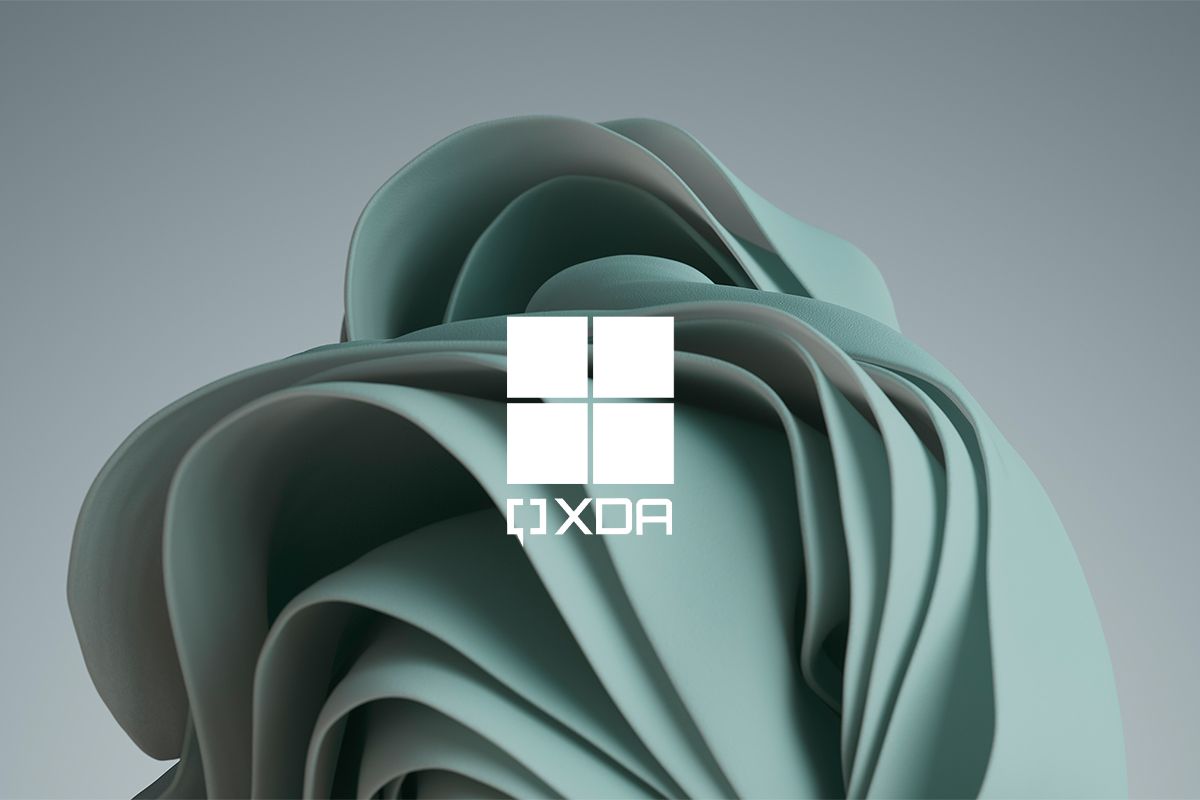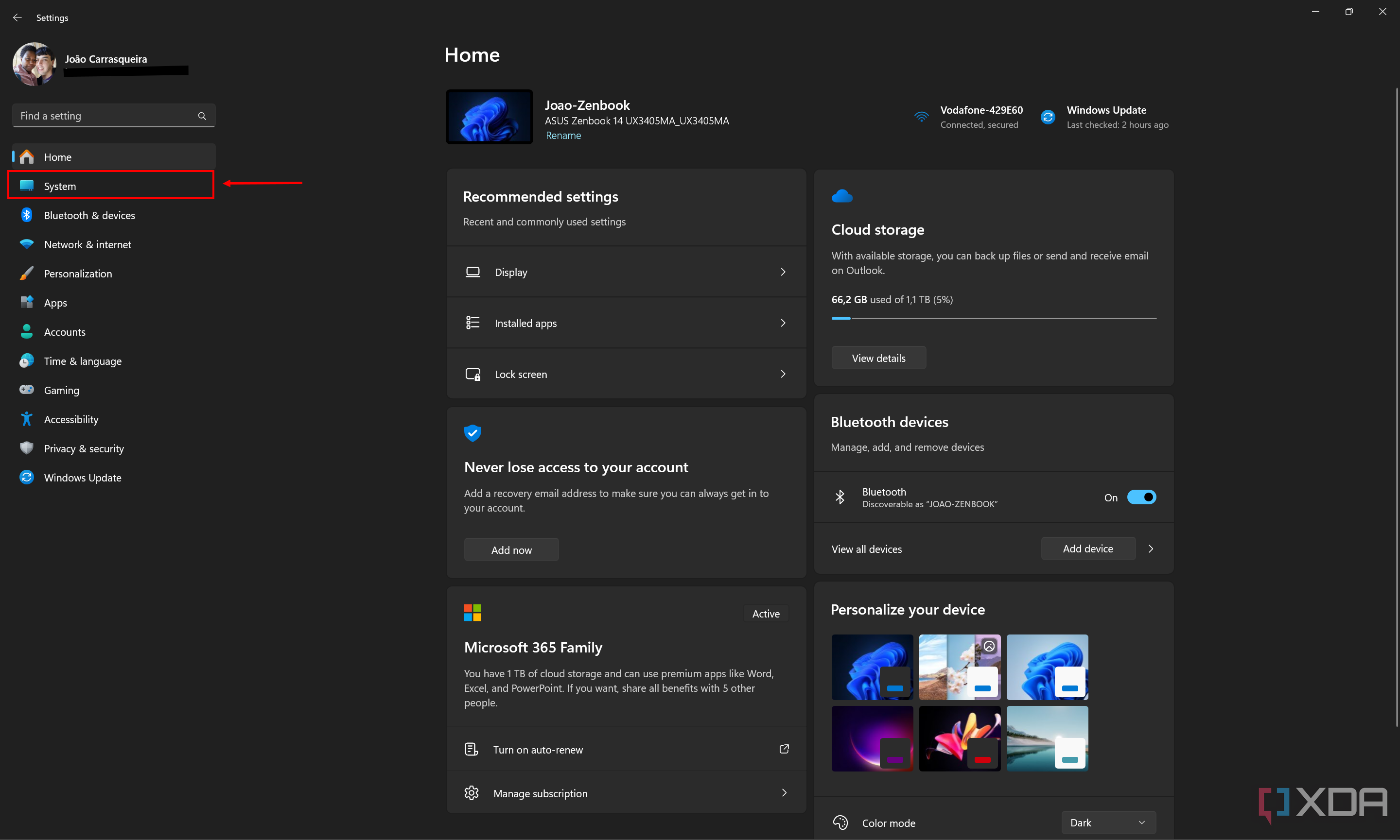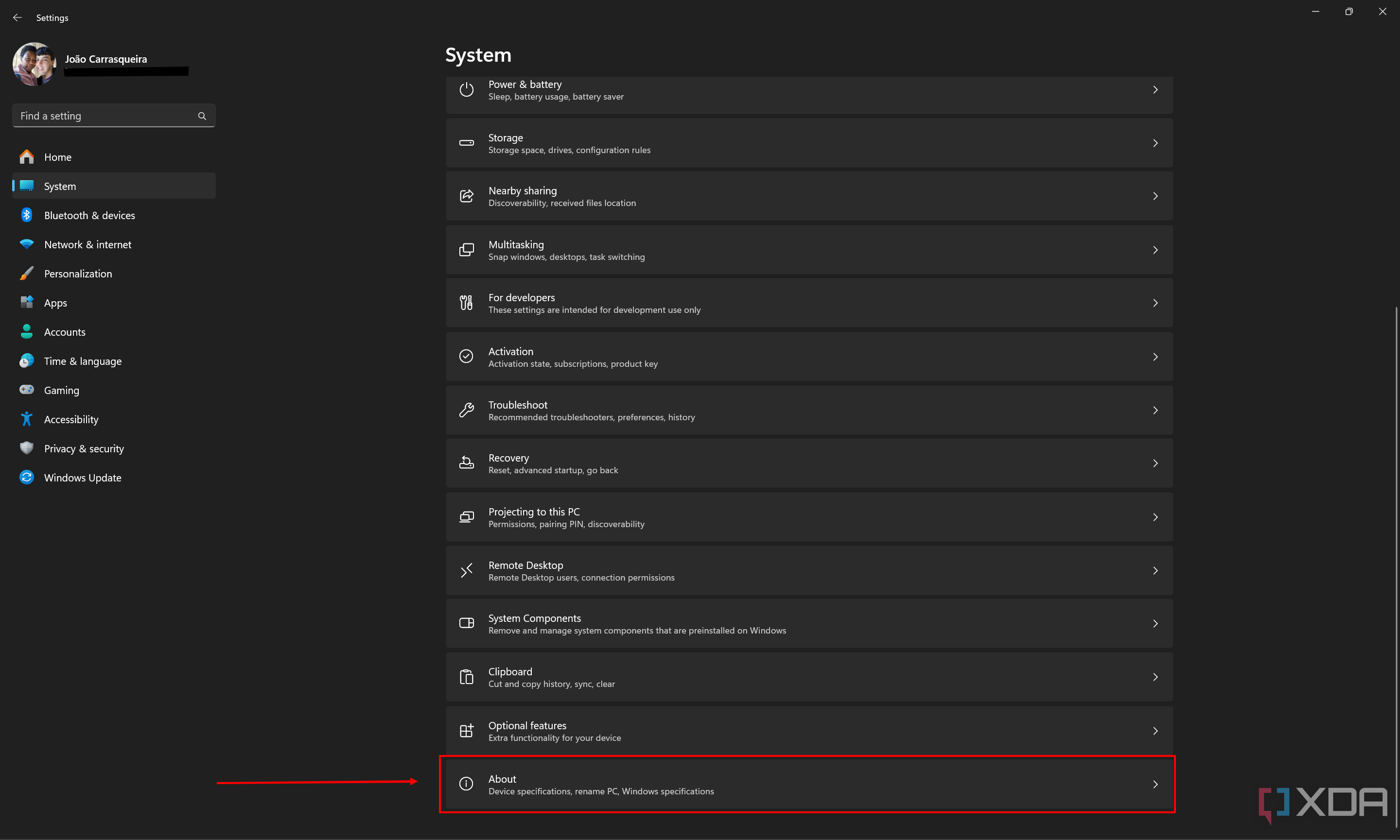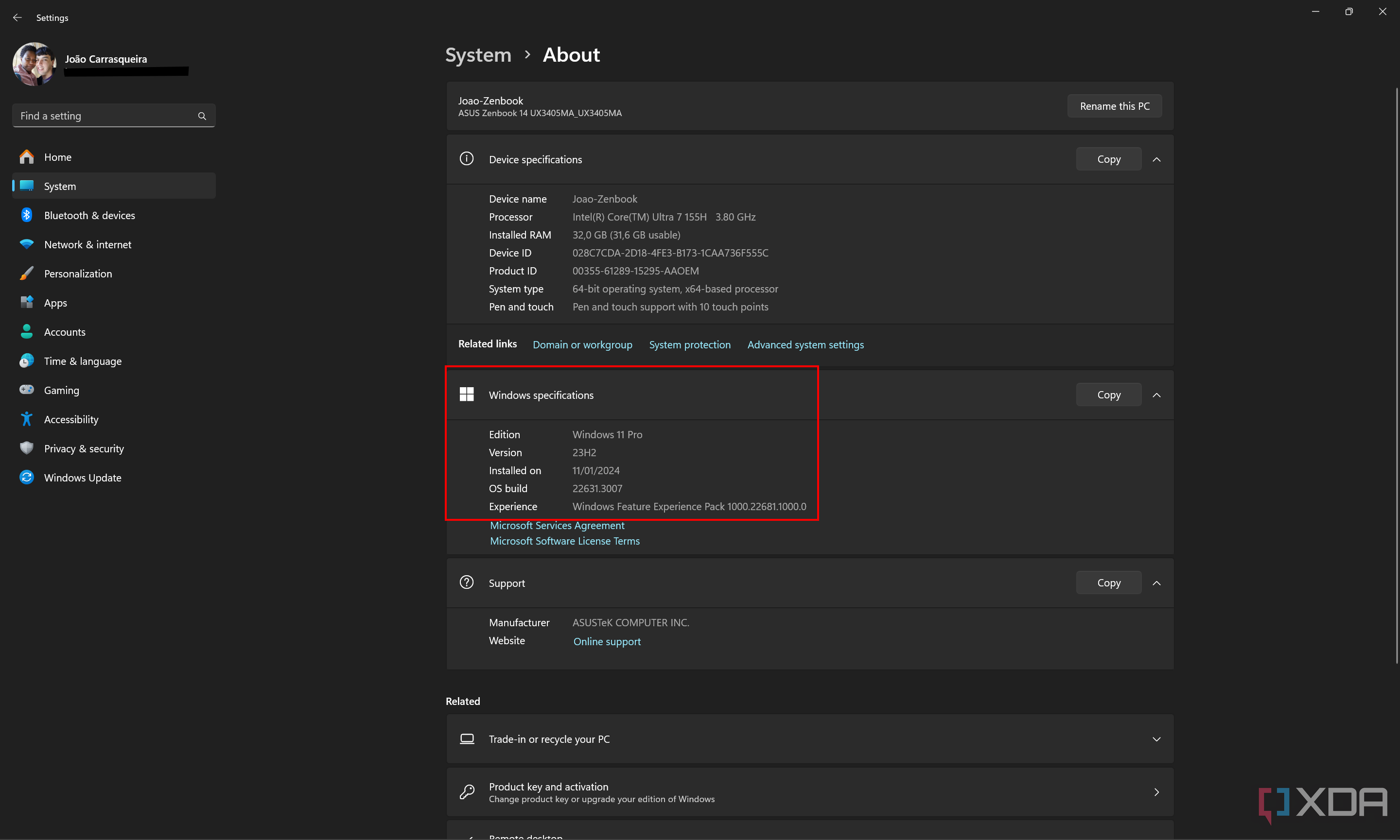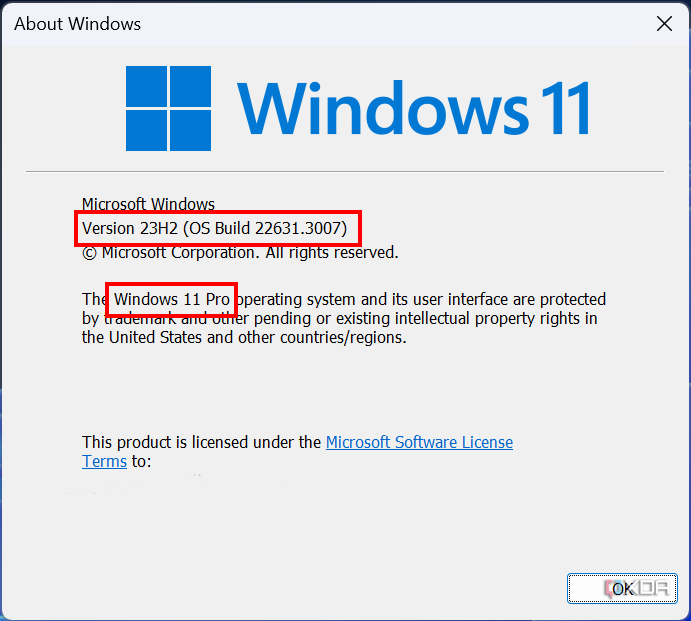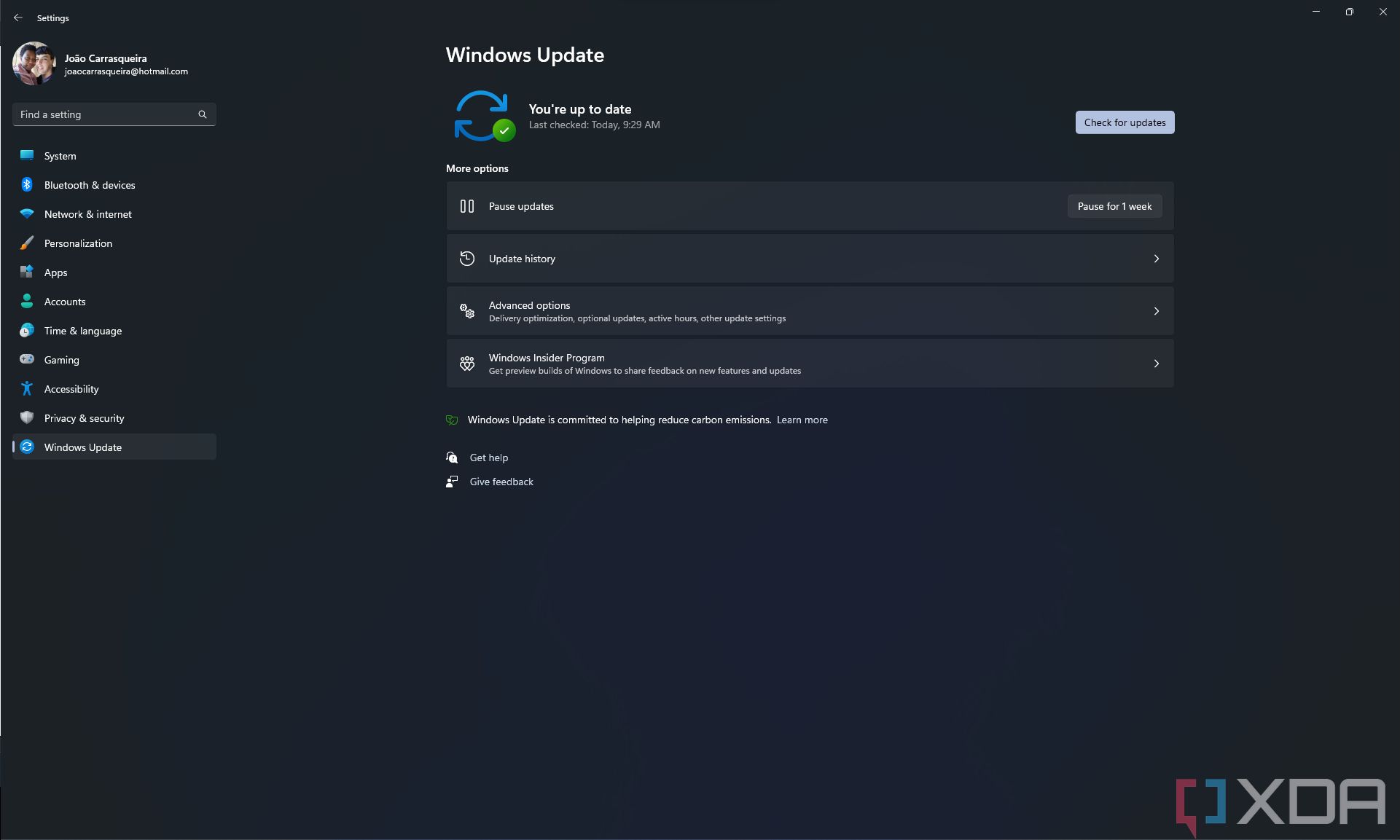Windows 11 is the latest version of Microsoft's popular operating system (OS), and it's still fairly recent, having launched on October 5th, 2021. Just like Windows 10 before it, Windows 11 gets major updates every now and then, such as Windows 11 version 23H2 in late 2023, and version 22H2 a year prior. These updates can change a lot about how the OS works, and so, it can sometimes be important to check what version of Windows 11 you have.
In addition to these major annual updates, there are some features that can be added through smaller updates. Plus, some features are exclusive to certain editions of Windows 11, such as how Windows Sandbox is only available in Windows 11 Pro or higher. You can check all this information directly in Windows 11, and we're here to show you how.
How to check your Windows 11 version
Finding out what version of Windows 11 you have is fairly easy. Follow these steps:
- Open the Settings app
-
Click System on the menu on the left.
-
Scroll down (if needed) and click About.
You'll see all the information about Windows 11 under Windows specifications, including the edition, version, and build number. These all mean different things, so let us explain a bit more.
Windows 11 Edition
The Windows 11 edition dictates some features you may or may not have access to. Windows 11 Home is the base edition, and it includes most things a regular user will need. Windows 11 Pro adds features like BitLocker encryption, Hyper-V virtualization, Windows Sandbox, and more. There are a few editions of Windows 11 with different feature sets, but these two are the most common, with others being reserved for businesses and education. Here's a rundown of the differences between the Windows 11 Home and Pro:
|
Feature |
Windows 11 Home |
Windows 11 Pro |
|---|---|---|
|
Requires a Microsoft account for setup |
Yes |
Only when set up for personal use |
|
Join Active Directory/Azure AD/Microsoft Entra ID |
No |
Yes |
|
Hyper-V |
No |
Yes |
|
Windows Sandbox |
No |
Yes |
|
Microsoft Remote Desktop |
Client only |
Yes |
|
Windows Hello |
Yes |
Yes |
|
Device encryption |
Yes |
Yes |
|
Firewall and network protection |
Yes |
Yes |
|
Internet protection |
Yes |
Yes |
|
Parental controls/protection |
Yes |
Yes |
|
Secure Boot |
Yes |
Yes |
|
Windows Defender Antivirus |
Yes |
Yes |
|
BitLocker device encryption |
No |
Yes |
|
Windows Information Protection |
No |
Yes |
|
Mobile device management (MDM) |
No |
Yes |
|
Group Policy |
No |
Yes |
|
Enterprise State Roaming with Azure |
No |
Yes |
|
Assigned Access |
No |
Yes |
|
Dynamic Provisioning |
No |
Yes |
|
Windows Update for Business |
No |
Yes |
|
Kiosk mode |
No |
Yes |
|
Maximum RAM |
128GB |
2TB |
|
Maximum no. of CPUs |
1 |
2 |
|
Maximum no. of CPU cores |
64 |
128 |
Windows 11 version
The version number refers to when your current Windows version, or feature update, was released. New Windows 11 feature updates typically arrive in the second half of each year, which is symbolized by the H2 at the end. The first two numbers represent the year that version came out. This version number only changed with major updates, like Windows 11 version 22H2 or 23H2. The monthly updates that are released every month don't change it.
Build number
The build number is a bit more specific in helping determine what updates you have installed. As we've mentioned above, even though feature updates will only come once a year, you'll get cumulative updates every month. When you get a cumulative update, it will change the minor build number. So, for Windows 11 version 21H2, you'll see build 22000.xx, for example, with xx increasing with every cumulative update. If you have Windows 11 version 22H2, build numbers will be 22621.xx, and so on.
Cumulative updates are focused on security and stability, but they can also enable all-new features, so it's good to be able to identify the specific build number you have.
Windows Feature Experience Pack
Another thing you'll find on this page is the Windows Feature Experience Pack you've installed. Microsoft hasn't really delved into the specifics of what it's included in it, but the Windows Feature Experience Pack is responsible for certain Windows features that can be updated through the Microsoft Store.
Check your Windows version with winver
Another way to check your current Windows 11 version is the winver command. This is the most easily recognizable way to check your Windows version, since it applies to almost every Windows version, even before Windows 11.
Doing this is really simple: Simply open the Start menu and type winver, then press Enter. This will bring up a window that displays your version of Windows in a similar way.
The downside to this is that it isn't been updated to include the Feature Experience Pack version you have.
How to update Windows 11
If you notice you're not running the latest version of Windows 11, you can always check for updates to get the latest bits. To do that, open the Windows Update section of the Settings app, and click Check for updates, which will search for any available updates.
Some updates, like Windows 11 version 23H2, are usually optional when they're initially released, so you'll have the option to download them when you want to.
You may also be able to download and install the latest updates in the Installation Assistant tool from Microsoft. It allows you to upgrade from Windows 10 to Windows 11 if you haven't already, but it can also upgrade your Windows 11 version to the latest one. However, this isn't the method you want to use to install cumulative updates, only feature updates. Cumulative updates should be installed through Windows Update, or you can download them from the Microsoft Update Catalog to install them manually.
That's all you need to know about checking and updating your Windows 11 version. Knowing this information can be important for troubleshooting any problems you might be having. It can also help explain why you can't find a specific feature you've heard about.
If you're looking for a PC that supports Windows 11, all the best laptops (that run Windows) on the market right now ship with Windows 11 out of the box. We also have a list of the best Microsoft Surface PCs, all of which will also come with Windows 11.

